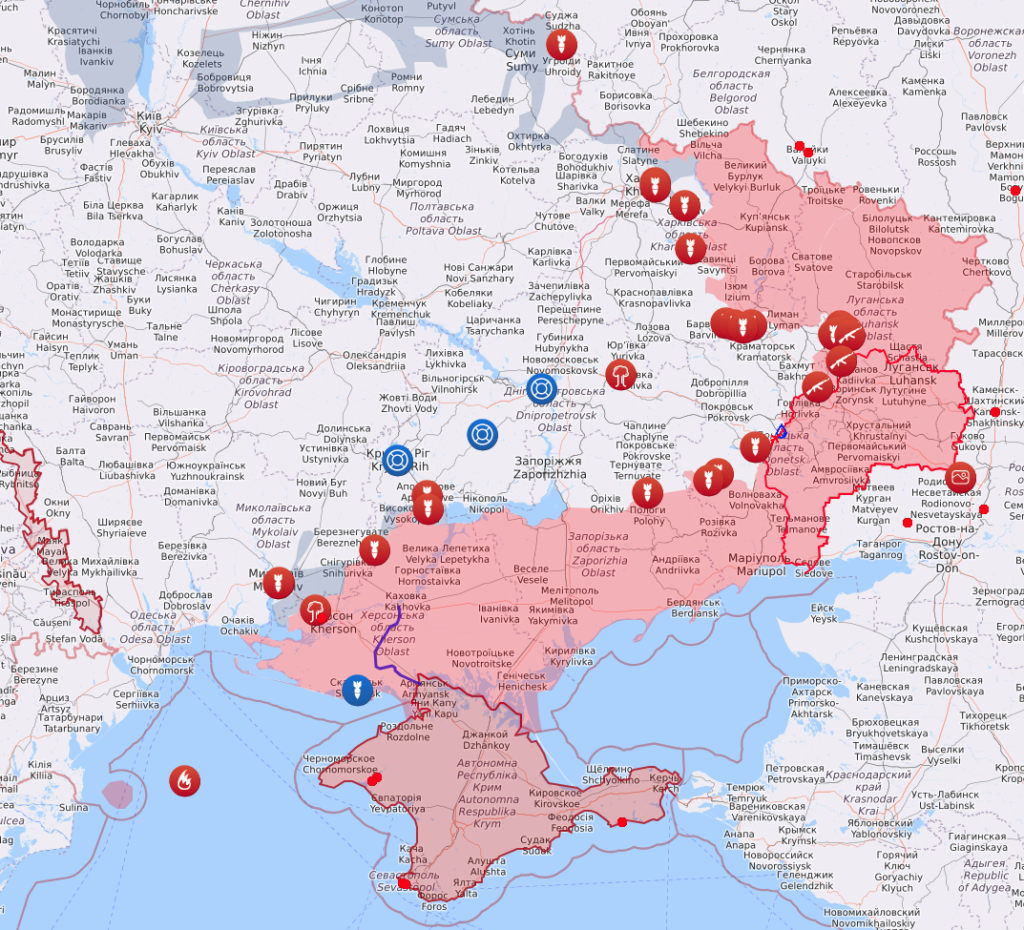In the summer of 2020, Portland, Oregon, became the poster child for American urban disaster zones. During the day, tens of thousands of citizens protested peacefully against police brutality following the murder of George Floyd in Minneapolis. But everything changed after dark. Nonviolent demonstrators with jobs, school assignments, and kids to raise went home; hundreds of anarchists swarmed in to take their place and waged a low-grade insurgency against the city. They fought pitched battles with the cops—throwing rocks, frozen water bottles, fireworks, buckets of excrement, and even Molotov cocktails. They attacked coffeehouses, immigrant-owned restaurants, mom-and-pop retail stores, banks, museums, churches, bus stops, and the Multnomah County Democratic Party headquarters with baseball bats, crowbars, and hammers. Most were military-age white males wearing all-black clothing and hiding their faces. The violence kept up, night after night, week after week, and month after month, into the winter, long after the rest of America had calmed down. My city had become the most politically violent place in the country, and I got worried e-mails from people I knew around the world—even in the Middle East!—asking me if I was okay and why on earth this was happening.
A crime wave followed. Shootings and homicides exploded 300 percent between 2019 and 2022, robberies rose 50 percent in 2022 alone, vehicle thefts hit record highs, and work-order requests for graffiti removal shot up 500 percent between 2020 and 2022. The City of Roses suffered 413 shootings in 2019 but 1,306 in 2022 and nearly twice as many homicides as San Francisco, though Portland is only three-fourths its size. Meantime, statewide crime actually declined from 2019 to 2021.
The homelessness crisis also intensified. The slow-motion collapse of Oregon’s mental-health infrastructure, a dramatic surge of cheap and deadly fentanyl and a far more potent and addictive form of psychosis-inducing meth, and a crippling housing shortage led to the formation of more than 700 tent cities in residential neighborhoods and business districts across the city.
But while it’s too soon to declare that Portland’s troubles have passed, the worst may now be over. Despite ongoing woes, Portland looks and feels much better than it did in dystopian 2020. The riots stopped, and the crime wave seems to have peaked, with shootings down by nearly 40 percent and homicides down more than 50 percent in the early months of 2023. A sober mood shift has taken over the city. Voters passed a ballot measure to restructure city government, while the three newest elected officials on the city council are steering Portland in a different direction. The city, county, and state are taking steps to reverse the decline.
Portland is suffering a serious livability crisis. Eighty-eight percent of respondents in early 2022 told the Portland Business Alliance that the quality of life is worsening. Portland is hardly the most dangerous city in America: the homicide rate in St. Louis is more than four times higher, with 65 murders per 100,000 people, compared with Portland’s 15 in 2022. Portland’s rate peaked at more than double the national average, but of all the cities with higher crime rates than Portland, only Chicago gets as many national headlines. That’s probably because Portland’s increase in crime was the worst in the country. No other city’s homicide rate rose so spectacularly. And unlike St. Louis, Baltimore, and other notorious hot spots, Portland was recently a destination city that touted its high quality of life as a reason to move there.
Of late, though, rather than attracting new residents, Portland has actually lost population, either to the suburbs or out of state. “I’ve never seen money move out of here,” commercial real-estate salesman Stu Peterson told Willamette Week. “Nobody ever wanted to leave Oregon. It’s a beautiful place. Most evacuees are high-wage earners who are fed up with the crime, taxes, and homelessness, in that order. There’s an ugly spiral.” Real-estate agent Justin Harnish described a client who left downtown Portland for the suburb of Lake Oswego after she saw a woman stab another woman in the face with scissors.
Accompanying the crime wave is a drastic staff shortage at the Portland Police Bureau. Portland now has fewer than 800 sworn officers, a smaller number than it had decades ago, when the city was barely half the size it is now. And with the surge in violent crime, the police have little time to deal with anything that isn’t life-threatening. Prioritizing shootings and other emergencies, they’re forced to neglect break-ins, stolen cars, vandalism, and just about everything else. The traffic police unit has been defunded, reduced to a single full-time traffic cop—not for ideological reasons but because the city has no one to staff that division.
Part of the blame rests with the months of demoralizing anti-cop violence in 2020, but Portland would probably be short of police officers anyway. Every city agency, from fire and rescue to the transportation bureau and the public defender’s office, faces staff shortages now. And while a shrunken police force didn’t cause Portland’s crime wave on its own, a police department that can barely react to anything but emergency calls aggravates the problem. Criminals behave as though they can get away with essentially anything and commit far more crimes than they would if they were investigated, arrested, and prosecuted swiftly. The Woodstock neighborhood, where Joe Biden won 88 percent of the vote, is considering hiring its own private security force.
Snip.
I spent more time talking to my neighbors that year than I ever had before or have since. A lot of us suddenly became friendlier outside our houses, and we weren’t talking about sports and the weather. Residents and business owners alike worried about where things were headed and expressed dismay at the city’s inability to defend itself. I didn’t talk with a single person who thought that everything was okay, that city hall was on top of it, or that the anarchists were not a menace. And nobody could understand why the homeless camps at the elementary school down the street or at the park hadn’t been cleared. No, I didn’t conduct my own scientific public opinion survey, but it was obvious that regular people were nearing the end of their rope and that the status quo was bound to be upended.
In 2021, that’s exactly what happened. A tsunami of outrage inundated the mayor, the city council, and the police bureau. Phones rang nonstop. Furious citizens shouted at meetings. Newspaper editors published scathing letters, and journalists at mainstream outlets covered distressed neighborhoods and interviewed disgruntled citizens while largely ignoring the activist set that booed every conceivable solution and told civilians that the problems were in their heads. Lawsuits against the city proliferated. Polls showed city council members languishing on political death row, with approval ratings in the teens.
Though most residents still wanted accountability for bad cops and citizen oversight of the police bureau, the complaints were primarily about crime, about how the police hardly ever show up anymore, and about disorder dragging neighborhoods down. Even some of the fashionable middle-class neighborhoods endearingly satirized in the Portlandia comedy series were enduring weekly gunfire.
In the fall of 2022, 82 percent of Portland respondents in an Oregonian poll said that they wanted more cops. If some Portlanders felt overpoliced a few years ago, hardly anyone felt that way after the chaos, with a mere 15 percent saying that they wanted fewer officers in 2021.
Before the city council elections got going in 2022, voters fired repeated warning shots in public opinion surveys. An overwhelming 85 percent of respondents said that they found the city council ineffective, with a clear majority describing it as “very ineffective.” For a while, it looked as though Portland was gearing up to fire every single official in a landslide election.
Two city council members, Dan Ryan and Jo Ann Hardesty, ran for reelection last year. Ryan managed to defy expectations and win despite the temper in the city, though it’s easy to understand why: he set aside his ideological views and changed with the times. Though he first ran during a special election in early 2020 on a campaign promising to cut police funding, he soon reversed himself. Anarchists vandalized his home seven times because he refused to cut the police budget.
Hardesty didn’t fare as well. Pushing bills to defund the police and opposing the cleanup of homeless camps, she put herself wildly out of step with her constituents. Mingus Mapps, a moderate on the council who had easily dispatched the left-wing populist Chloe Eudaly two years earlier, endorsed Hardesty’s challenger, Rene Gonzales, and bluntly said: “It is time to put ideology aside and elect people who will fight for Portland. I need colleagues who use debate, reason, and logic to solve our many crises.” Gonzales said, “Our once beautiful city is struggling in ways that were unfathomable a short time ago. . . . City hall’s ineffective, ideologically driven policies are ruining the city we used to proudly call home.” Gonzales won, and Portland replaced the city council’s last progressive firebrand with a centrist. It was the kind of event that marks the end of an era.
Sounds a lot like Austin, except for the sobering-up part. (Also, it’s good to read Michael Totten again. He seemed to disappear from view for several years. Probably because he was writing for The Bulwark…)

